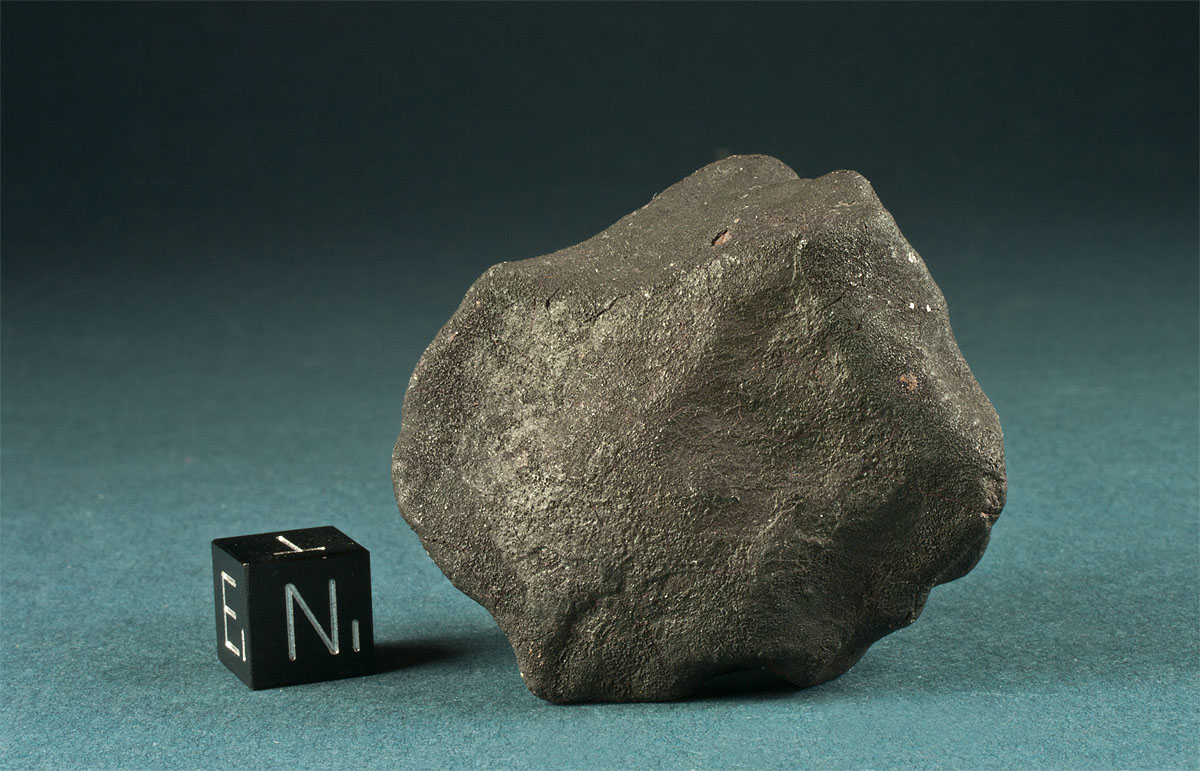Wiluna
5 miles due east of Wiluna township, Western Australia
Fall: September 2, 1967, 10:46 p.m. local time
TKW: 150 kg
Individual: 78.90 g
Nose shaped mass with few small elongated regmaglypts. The flat base of the meteorite is framed by delicate lipping indicating an oriented flight at the time of solidification. The complete specimen is covered by thick dull primary fusion crust. Wiluna fell after a fireball was seen and sonic crackling and hissing were heard by almost the entire population of Wiluna which at the time of the fall gathered in the town’s outdoor movie playhouse. The meteorite shower consisted of more than 1000 stones and produced a strewnfield of four by two miles five miles east of the Wiluna township. The pictured specimen is a remarkably fresh meteorite recovered during the search organized by the Western Australia Museum Perth shortly after the fall. The specimen bears the painted collection number 12934 101 which indicates the 101st individual collected from the Wiluna meteorite fall.




